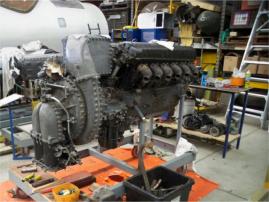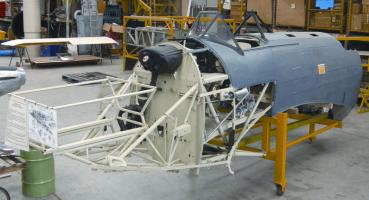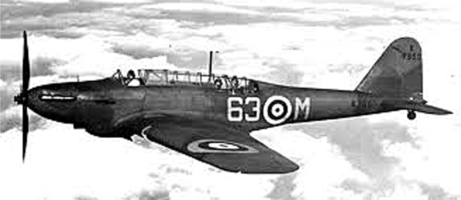
AVRO ANSON I EF954
Twin engine light military transport, aircrew trainer, general reconnaissance bomber; civil aircraft for passenger and freight services.
History of EF954
The Museum’s first aircraft has a strong connection with aviation in South Australia. EF954 was delivered to No. 2 AP Bankstown on 28 December 1942 and to No. 6 SFTS at Mallala on 3 April 1944. During World War II, 1,028 of these aircraft, including EF954, were used for training Australian aircrew, many of them operating from airfields at Mallala, Mount Gambier and Port Pirie. Not only were pilots trained for twin engine flying, but navigators, air gunners, wireless operators and bomb aimers also received training in this versatile aircraft.
After the war many Ansons were sold to the public (farmers in particular!). Mr Reg Franks, a farmer from Mallala, purchased this aircraft from the RAAF via the Commonwealth Disposals Commission on 30 May 1947. Mr Franks donated the Anson to the Museum on 18 May 1984 (prior to the Museum’s establishment meeting of June 1984).
The major part of the display aircraft is EF954, but includes many parts from Anson AW965 which was later VH-FIA of Flinders Island Airlines. The latter came to the Museum in 1994.
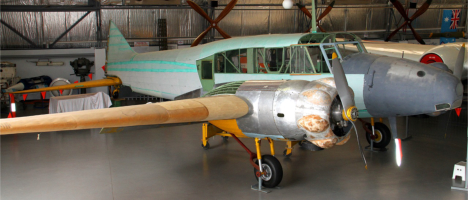
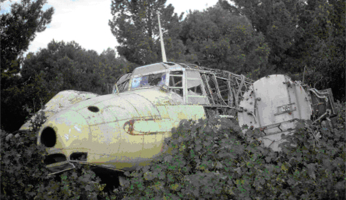
Technical Specifications
Engines: 2 x 320 hp Armstrong Siddeley Cheetah IX radial engines
 Length: 12.9 mMaximum take-off weight: 4,720 kg
Length: 12.9 mMaximum take-off weight: 4,720 kg
Wing span: 17.5 m
Height: 4.2 m
Cruising speed: 128 kt (240 kph)
Range: 1,270 km (700 nm)
Crew: 1 pilot and 2 trainees (navigator and wireless operator)
AVRO ANSON in military and civil service
The total number built was 11,020. The prototype first flew on 7 January 1935 at Woodford, UK.
The Avro Anson owes its origin to a civil need. In May 1933, Imperial Airways of Great Britain approached Avro with an outline of what it wanted for a six-passenger charter aircraft. And so the Avro 652 was designed. The aircraft was fitted with two Armstrong Siddeley Cheetah V engines, giving a cruise speed of 150 mph (240 kph) and a range of 600 miles (960 km). With the increasing threat of a war in Europe, the RAF Coastal Command saw the need for a twin engine aircraft and purchased an initial batch of 174 Ansons. During World War II the Anson served with the Air Forces of the UK, Canada and Australia – training pilots, navigators and wireless operators.
In Australia, the Anson entered RAAF service in November 1936. It was the first aircraft with a retractable undercarriage in our Air Force and our first monoplane bomber. In World War II Ansons gave wonderful service on coastal reconnaissance, anti-submarine duties and aircrew training. Approximately 100 Ansons were used in civil commercial operations in Australia in the post-war years. East West Airlines was formed in Tamworth, NSW, using six ex-military Ansons. Other airlines to use this type of aircraft were Butler Air Transport Pty Ltd (NSW), MacRobertson Miller Airlines, Woods Airways (WA), and Qantas Airways (PNG).
On June 30 1962 the Department of Civil Aviation grounded all but two Avro Ansons in this country due to concerns with the wood and glue construction of the wings. Two Avro Anson Type 19s were fitted with metal wings and continued to fly after 1962, one being deregistered in 1965, the other in 2002 when it was sold in New Zealand.
FAIREY BATTLE N2188
Single engine military ground attack fighter and bombing/gunnery trainer.
History of N2188:
The aircraft was received by the RAF in May 1939 and sold to Australia soon after. It was officially handed over to the RAAF on 25 March 1941. After arriving in Australia, it was allocated to 2 BAGS at Port Pirie in September 1941 and used for aircrew training. It was mainly utilised for air gunnery training. On 7 May 1943 it force-landed into mangroves north of Port Davis just west of Port Pirie aerodrome. The site was so swampy the aircraft was not recoverable. The engine, front cockpit and tail were salvaged and the rest abandoned. The remains were rediscovered by local aircraft enthusiasts in June 1974. The fuselage was recovered during several trips over two years. The aircraft eventually came to the Museum in September 1987. Later a set of wings was donated by the RAF Museum at Hendon, UK. Restoration, which commenced in 1999, has been made possible by a generous grant of $26,000 from the SA Division of the RAAF Association to cover the cost of machinery, tools and materials. The aircraft is one of only four surviving Battle aircraft in the world.
Components for the restoration of N2188 have been acquired from the UK, Canada, Belgium and locally.
Technical Specifications
Engine: Rolls-Royce 1,030 hp V12 Merlin II
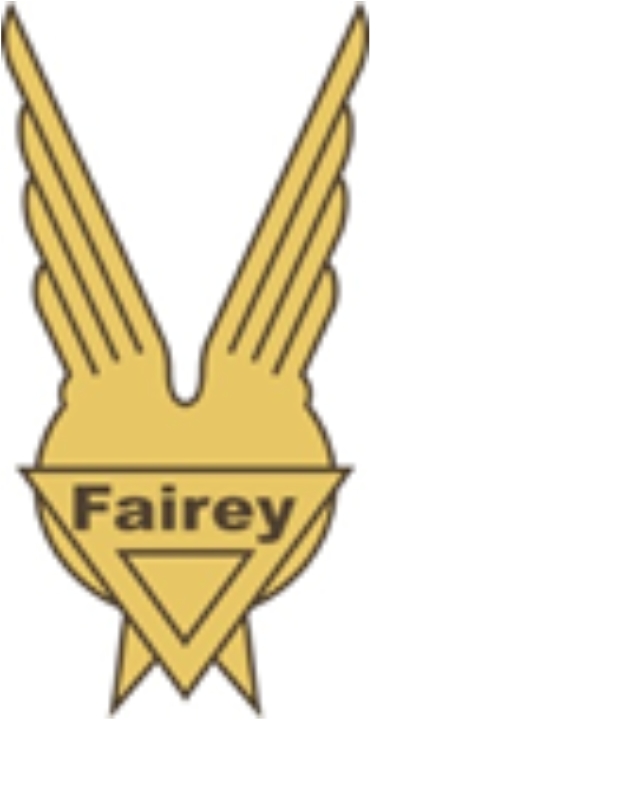 Maximum take-off weight: 4,895 kg
Maximum take-off weight: 4,895 kg
Length: 12.85 m
Wing span: 16.46 m
Height: 4.72 m
Cruising speed: 182 kt (338 kph)
Range: 1,600 km (890 nm)
Crew: 1 pilot, 1 gunner, 1 bomb aimer
Armament: 1 x .303 Browning machine gun in starboard wing, 1 x .303 Vickers machine gun in
the rear cabin, 4 x 113 kg (250 lb) bombs in the wing
(Some Battles had a Fraser Nash FN5 Gun Turret with 2 x .303 Browning machine guns)
History of Type
The Fairey Battle made its debut in 1936 and entered RAF service in 1937. By 1939, 1,000 were available for World War II. During the German invasion of The Netherlands, Belgium and France in 1940, the Fairey Battle was outclassed and significant combat losses occurred. The aircraft type was then relegated to training units mainly as bombing and gunnery trainers. In total 2,201 Battles were built. 366 Fairey Battles, including N2188, came to Australia between June 1940 and December 1943.
OTHER RESTORATIONS
Merlin Packard
